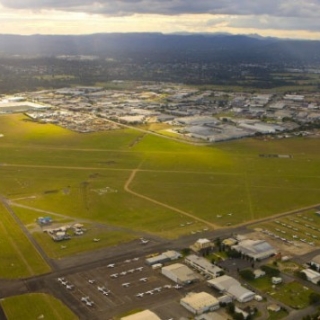
By Daniel Mellish, Specialist Consultant - Property and Finance
Airports are critical elements of transport and logistics infrastructure, facilitating daily movements of passengers and goods throughout the country and the world. But what opportunities exist for airport owners or operators to charge for the usage of these assets, to generate revenue and profits? The short answer, many. The long answer is that opportunities may vary depending on the airport.
Whether it’s a capital city constructing a major new asset such as Brisbane's $1 billion + new parallel runway slated for 2020, or a remote regional airstrip seeking to understand who uses that aerodrome and the revenue they could be charging (or are currently losing), important operational and financial information needs to be gathered and assessed. Further, the interests of multiple parties need to be considered and balanced, particularly when it comes to proposed price increases - a heated topic at the best of times!
Many large airports, and other infrastructure projects, employ a building blocks methodology - incorporating capital and operating costs, depreciation and inflation. Here, a calculated asset base has a rate of return applied to it, most commonly the operator's weighted average cost of capital (WACC). As a result, there is both a return on assets and over time a return of assets. This total return is allocated across the various revenue sources and drivers, i.e. passengers or movements, to arrive at unit charges. The downside of this approach is the complexity of the calculations and information required, which in some cases may not be available or appropriate, such as a WACC for a council-owned regional airport.
For smaller airport owners or operators, the historical asset base may be less of a concern – owners may have a goal of simply recovering an appropriate amount of their annual operating costs. Here, detailed annual operating cost budgets are required, preferably also with accurate actuals and forecasts for any future year recalibrations, as well as passenger or movement forecasts for the different revenue sources. The downside of this approach is that capital costs are not recovered and the calculations and suggested charges can fluctuate significantly over time with varying operating costs, when airlines and aircraft operators would prefer more steady and predictable price paths.
Where airport operators can't or don't track all aircraft movements, such as in remote locations, fixed annual or monthly charges could be levied on all aircraft known to utilise that aerodrome, with these charges publicised on the operator's website and other appropriate avenues. Demand forecasts still need to be made to estimate annual budgeted revenue, especially as there's no regular reporting of actual usage. Whilst charging fixed fees set by aircraft type may result in perceived inequality for infrequent flyers, there are efficiencies gained in charging and billing under this approach, especially when using annual charges.
Airport owners and operators can also benefit from having their fees benchmarked against other similar (or nearby) airports, the owners of which are more than likely wrangling with similar pricing decisions, budget balancing issues, and shortages of accurate and timely information. One consideration here is that benchmarked airports may not be recovering all their costs, i.e. operating at losses, so benchmarking should not be the only approach employed.
In terms of flight or passenger data to assist in forecasts, pricing decisions and charging for usage, data exists both publicly and from private operators, including transcribed radio transmissions. Decisions will often come down to a cost versus benefit analysis, including a quantification of potential revenue leakage. Often the overall approach and strategy to aeronautical pricing is a combination of the approaches outlined above.
Aviation Projects has experience in assisting airport owners/ operators and government agencies with aeronautical pricing decisions, reviews and strategies. Our team of highly qualified professionals has assisted in modelling usage, pricing methodologies, budgeting and forecasting. For more information about pricing and financial forecasting, contact Daniel Mellish on 07 3371 0788 or danielmellish@aviationprojects.com.au
Tags: Pricing, Revenue, Budgeting, Forecasting, Modelling, Aviation Consultant
